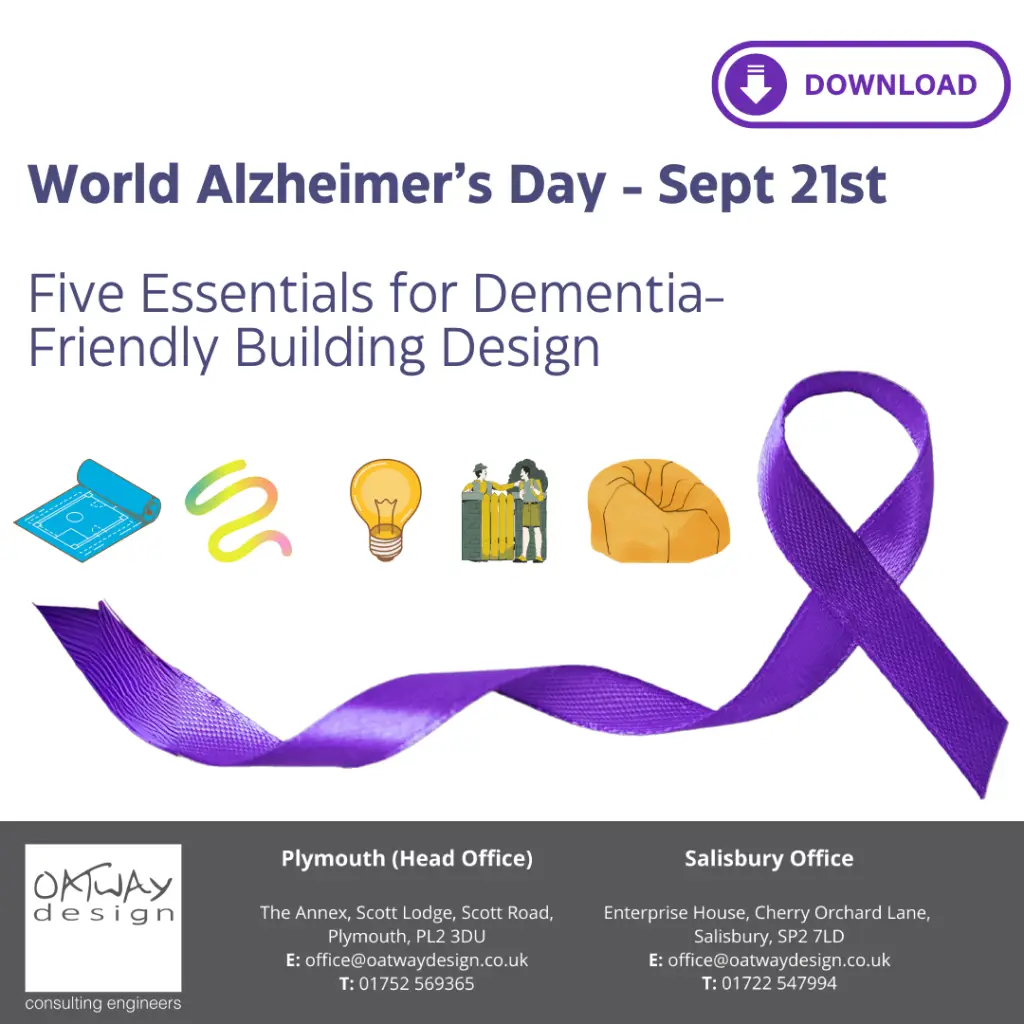As we approach World Dementia Day, we want to take a moment to explore the profound impact that lighting can have in dementia care settings. Thoughtfully designed lighting can play a critical role in enhancing safety, comfort, and well-being for those living with dementia. At Oatway Design, we are passionate about using our expertise to create spaces that not only meet functional needs but also support the daily lives of residents and staff in care facilities.
Why Lighting Matters
Lighting does more than illuminate a space—it shapes how we experience it. For individuals with dementia, changes in vision and perception make the role of lighting even more important. Poorly lit areas, sudden contrasts between light and dark, or excessive glare can increase disorientation and anxiety. By designing lighting systems that maximize natural light, provide consistent illumination, and use energy-efficient LED solutions, we can create environments that foster safety and reduce confusion.
Key Considerations for Dementia-Friendly Lighting
An integrated lighting design approach considers the entire environment, from bedrooms and corridors to communal areas. Here are some ways we can make a real difference through lighting:
- Maximizing natural light: Bringing daylight into spaces helps regulate circadian rhythms, improving mood and supporting better sleep patterns.
- Consistent, even lighting: Avoiding sudden transitions between bright and dim areas reduces disorientation and creates a more comfortable, predictable environment.
- LED lighting for safety: Energy-efficient LEDs provide bright, uniform lighting while minimizing glare, making spaces easier to navigate.
These are just a few examples of how lighting can transform a space into one that feels safer and more welcoming for people living with dementia.
Learn More: Download Our Infographic
While lighting is essential, it’s only one piece of the puzzle when it comes to designing dementia-friendly spaces. We’ve created a downloadable infographic that highlights five key areas of building services design, from heating and ventilation to safety systems, that can make a big impact in dementia care settings.
The infographic draws on leading research, including guidance from Stirling University’s Dementia Services Development Centre, to provide actionable insights for creating environments that truly support those living with dementia.
Click here to download the infographic and discover how smart building design can make all the difference.




